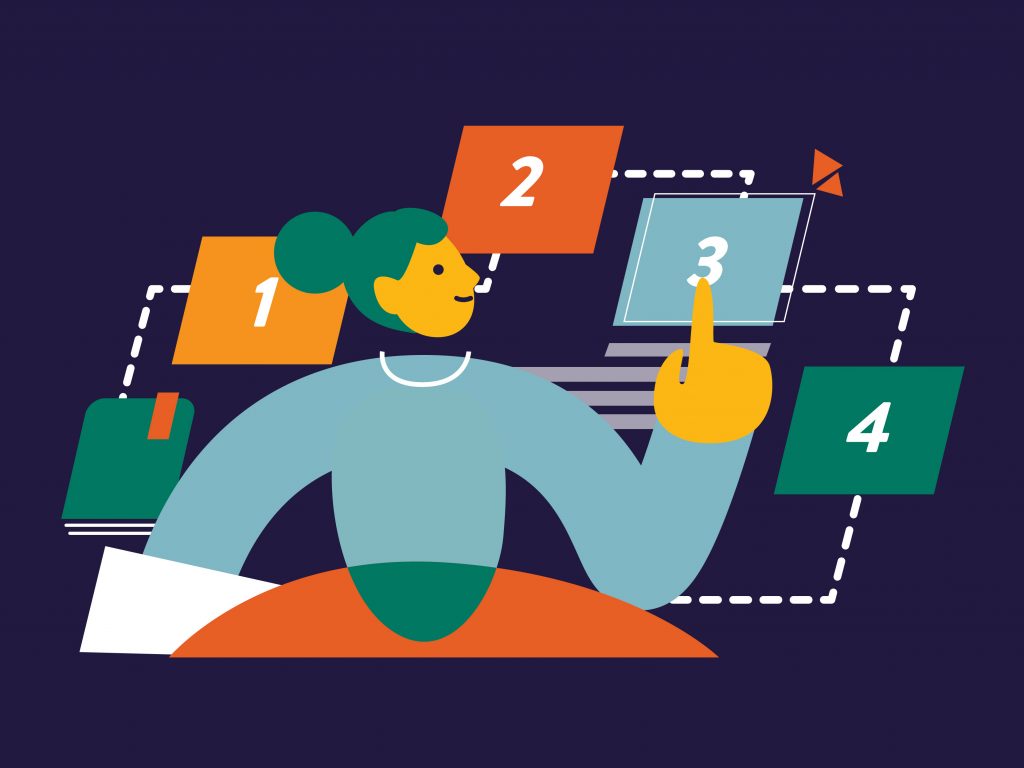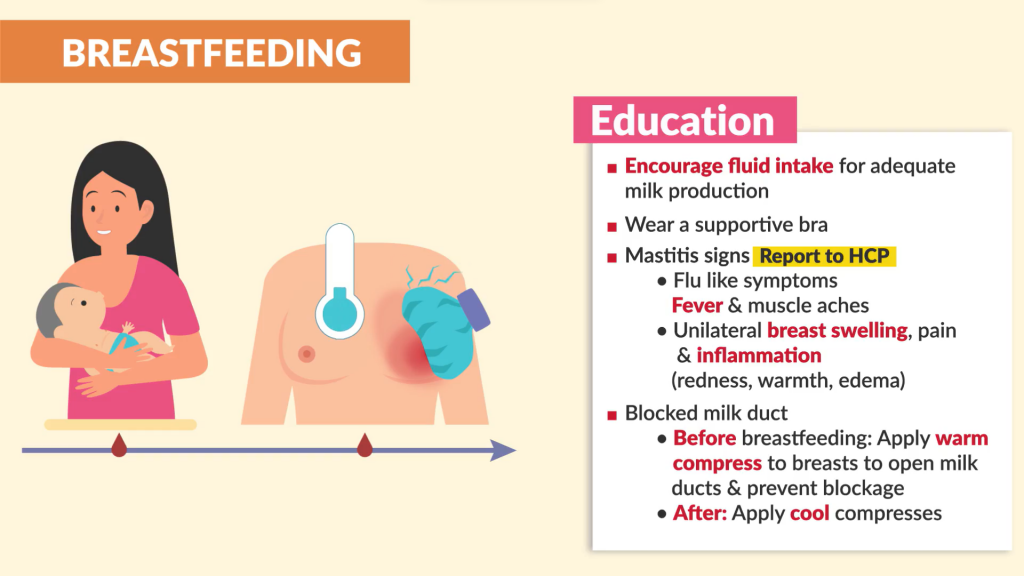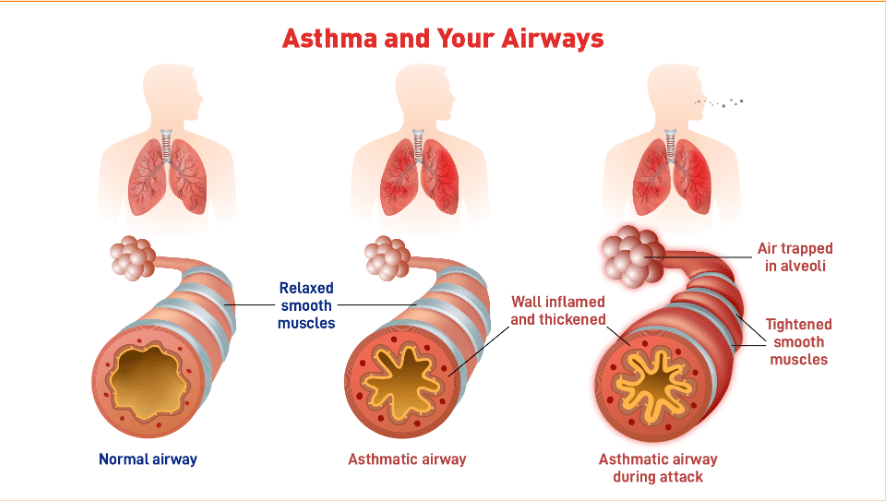In the changing world of healthcare education, using animation is a new and innovative way to make things clear. As we explore this visual journey, we’re deciding between two types of animation: two-dimensional (2D) and three-dimensional (3D). This choice between using 2D healthcare animation and 3D healthcare animation is important for effective communication in medical education for sensitive subjects.
An overview of using 2D and 3D Healthcare Animation for Sensitive Subjects
Animations make complicated medical ideas easier to understand. They bring these concepts to life visually, which really helps students. Because animations are dynamic, they break down language barriers and make complex medical situations simpler.
As we start exploring, the first decision we face is whether to use 2D or 3D animation. Each option has its own pros and cons. This article is here to help you understand and decide which one is right for you.

In our journey, we’re looking closely at important things like cost, timelines, and the good and bad parts of both 2D and 3D animation. These factors are crucial for making sure our animation choices match the project needs and overall educational goals.
Defining 2D and 3D Healthcare Animation
Before we start talking about how much things cost and how long they take, let’s first talk about what makes each type special.
1. Understanding 2D Animation in Healthcare
Think of 2D animation like classic cartoons. It’s been around for a long time, keeping things simple. It uses flat, two-dimensional images to explain medical ideas in a clear and easy-to-understand way. What’s great about it is that it can take complicated ideas and make them simple and easy to see. You can see for yourself an example of 2D healthcare animation below. It is a 2D animation video F.Learning Studio made for Simple Nursing about ischemic stroke.
2. Understanding 3D Animation in Healthcare
Now, 3D animation goes beyond the usual cartoons. It adds depth and makes things look real. It started in video games and movies and is excellent at showing complicated medical situations with detailed 3D pictures. Below is a 3D animation video about the same subject, ischemic stroke, made by Nucleus Medical Media for Cook Children’s Healthcare System for reference.
3. Cost Considerations: 2D vs. 3D Healthcare Animation
Understanding the cost of animation is important because it directly affects whether healthcare education projects are doable or not.
3.1. Breaking Down 2D Healthcare Animation Costs
2D animation is affordable and easy to access because it’s simple to design and produce. Its straightforward process makes it a budget-friendly choice, using resources efficiently.
The cost for 2D healthcare/medical animation can start from $100/minute if you use a freelancer and can go up to $8,000/minute if you work with a professional studio. For a smaller animation studio, you can receive a tailor-made animation video with unique concept art for just $1,000/minute.
Recommended Reading:
5 Best Animated Video Production Companies [Update 2023]
3.2. Breaking Down 3D Healthcare Animation Costs
On the flip side, 3D animation is more expensive because it needs advanced technology, specialized skills, and complex production. Since it takes more time and expertise, you have to think carefully about your budget when considering 3D animation.
For 3D healthcare and medical animation videos, expect to pay $5,000 to $25,000 per minute for detailed and high-quality ones. Of course, the more complex and longer the video, the more expensive it is.
4. Timeline Implications
How quickly animation develops is important, especially for healthcare education projects that have different timelines.
The production time for both 2D and 3D always depends on the complexity of the project.
However, as a rule of thumb, 2D motion graphics videos of 1 minute in length usually just take 3 to 6 weeks to produce. For 2D frame-by-frame style, it could take 8-12 weeks to complete a one-minute video.
For 3D animation, it only takes about 3-5 days to produce 5 to 10 seconds. However, it could take at least 8 weeks to produce a 3D video of 1 minute in length.
Pros and Cons of Healthcare Animation
As we continue our journey, we uncover the strengths and limitations of both 2D and 3D healthcare animations.
1. Pros and Cons of 3D Healthcare Animation
Pros of 3D Healthcare Animation
- Visual Communication: 3D animation possesses the capability to provide viewers with precise and intuitive simulations. Its effectiveness is notable in representing anatomy, medical procedures, and healthcare scenarios with a high degree of realism, especially in the context of interactive 3D experiences.
Cons of 3D Healthcare Animation
- Inflexibility: Only subjects that have been scientifically visualized can be accurately simulated. If it is an abstract or scientifically unvisualized object, visually representing it using 3D animation is not possible, and should not be done.
- Potential for Distraction And Uneasiness: For people who are unfamiliar with medical images, the details of 3D animation can become a distraction. They require some time to be explained to. Furthermore, since 3D animation offers a very detailed view of the subject at hand, some sensitive subjects such as organs or body parts can make viewers uneasy.
- Cost and Time: As previously mentioned, one minute of 3D video costs from $5,000 to $25,000 and takes at least 8 weeks to produce. For those that are short on time and money, 2D animation is the way to go.
2. Pros and Cons of 2D Healthcare Animation
Pros of 2D Healthcare Animation
- Flexibility: 2D animation helps simplify and symbolize abstract and complex medical terms, so it is very friendly for people inside and outside of a specific industry.
- Sensitivity:
- Due to its fun nature, sensitive images in 2D animation can be depicted in a less gory and more ‘animated’ way. Therefore, 2D animation greatly helps soften the impact of sensitive healthcare images.
- For example, we’ve collaborated with Simple Nursing on various video projects catering to nursing students. In a particular undertaking, our focus was on introducing breastfeeding and addressing related issues. Recognizing the sensitivity of the topic, we crafted a vibrant and lively 2D animation video. Using abstraction, we depicted breast swelling in a way that softened the impact of potentially uncomfortable visuals. This approach, utilizing the playful nature of 2D animation, effectively minimized potential uneasiness for viewers.

- Art Style: 2D animation is suitable for audiences of different ages and different cultures. No matter who you are, 2D animation is always accessible and easy to understand.
- Time and Budget: Overall, 2D animation costs less and takes less time to make than 3D animation. As mentioned, it only takes 3 to 6 weeks to produce one minute of 2D motion graphics video that costs approximately $1,000 or even less. It also means that 2D animation is more suitable for mass production than 3D animation.
Cons of 2D Healthcare Animation
- Limited Realism:
- 2D animations may lack the depth and realism that 3D animations can achieve, potentially impacting the visual representation of certain medical procedures or anatomical details.
- More consideration to take if simplifying details: Simplifying details with 2D animation definitely needs careful consideration to balance precision and detail. Therefore, the audience and the purposes of the video need to be considered. For example, if the audience are patients (those who are unfamiliar with medical terms), we can totally remove complicated details and prioritize comprehensibility.
Despite the lack of realism, with 2D animation, artists can still enhance details and visual acuity by using techniques and effects. For example, F.Learning Studio collaborated with Pixels, a production house located in Turkey, on a project related to asthma. They sought to incorporate a 2D video into their project to illustrate the intricacies of a person’s lungs affected by asthma. Employing specialized techniques, we transformed the 2D video to closely resemble a 3D video, aiming to amplify the portrayal of all the nuances in the lungs. Therefore, if you have budget constraints or time constraints, but still want your animation to look as realistic as possible, then 2D animation is definitely a better option in this case.

Looking for an animation that will help you create stunning 2D animation for your healthcare project? F.Learning Studio offers customized 2D animation video with end-to-end production service for just roughly $1,000 per minute, which only takes 3-6 weeks to produce.
Recommended Reading:
2D vs 3D Animation: Which Works Better for Your Projects
Case Studies and Examples: Stories of Success
In our adventure, we take a break to look at real success stories of 2D and 3D healthcare animation. These stories highlight what each type of animation is really good at and give us helpful insights into how well they work in the real world.
1. 2D Healthcare Animation Studio
Below is an example of work from F.Learning Studio. They create their own personalized characters, backgrounds, and other elements. Even aspects from scriptwriting to animation are completed in-house without involving third parties.
The video features a colourful animated character talking about mental health. This is a good way to talk about a sensitive problem, using an animated figure instead of a real person talking about a real-life situation. That is the power of 2D animation, turning traumatic events or a situation into a captivating script and presenting it visually in an engaging manner to effectively convey the narrative.
However, this type of animation technique is not as suitable when you need to describe something very complex. This is because 2D shapes have only length and width. Meanwhile, 3D shapes have length, width, and depth. Therefore, it should not be used to demonstrate complex processes that are sensitive such as surgery process.
2. 3D Healthcare Animation Studio
Below is an example of work from Sliced Bread Animation. They created this 3D animation video about mechanism of action – How a drug works in your body, specifically the chemical process it goes through to produce its effect.
With the 3D technique used in the video, viewers can see the chemical reaction happening inside the body. It created an immersive and technically-accurate experience which makes it really easy to understand this complex concept, while eliminating any gory and bloody image.
However, it can be seen that the video is very complex compared to 2D videos, leading to a much higher cost and longer production time.
Decision-Making Factors
Deciding between 2D and 3D animation is like picking the right tool for the job. Here are some important things to think about:
- Purpose: If there is a need for an accurate, visual, and detailed description for teaching, training, or research purposes, then 3D is suitable. However, if your project only needs a broad and concise illustration, or needs emphasizing on main points for the purpose of introducing and summarizing, then 2D is more optimal.
- Project Complexity: If your project is quite simple and needs to be done quickly, 2D animation might be the go-to. On the other hand, if your project involves complex medical details and you want it to look very real, 3D animation could be the better choice.
- Budget: Money matters! 2D animation is usually more budget-friendly because it’s simpler. However, if you’re willing to spend a bit more for that extra wow factor, 3D animation might be worth the investment.
- Timeline: How soon do you need it? 2D animation is faster to make, so if time is of the essence, it might be the winner. But if you have the luxury of time and want something that looks amazing, 3D animation might be the way to go.
- Audience: The visual nature of 3D is more suitable for adults and those who are familiar with realistic medical images, working in fields such as doctors, nurses, medical students, etc. Meanwhile, 2D with diverse customization is more user-friendly for those not familiar with real medical images, such as children or individuals with limited prior knowledge of medicine.
- Culture and religious sensitivity: 3D may be challenging to comprehend and can cause discomfort for certain cultures and religions. On the other hand, 2D adapts better, serving a broader audience.
In the end, it’s about finding that sweet spot where your budget, timeline, and goals align. It’s not just about what looks flashy but what makes the most sense for your unique project.
Future Trends and Innovations
As technology keeps getting better, looking at the latest trends in 2D and 3D animation can make teaching medicine more exciting. This means we have new opportunities to improve how we teach doctors and students.
For 2D animation, new tech could make it more interactive. Imagine animations where you can click and learn, making it easier to understand complicated medical stuff. The design tools are also getting better, so the animations will look even clearer and nicer.
Now, think about 3D animation. The technology is improving to make it more real and interactive. Picture detailed 3D animations that feel like you’re really there, exploring the ins and outs of the human body or practicing medical procedures. These improvements could make 3D animation even better for teaching.
Overall, checking out the new technologies in 2D and 3D healthcare animation shows that we’re committed to using cool and innovative stuff to teach medicine better. It’s like an exciting journey where each new tech upgrade gives us better and more interesting ways to share important medical knowledge.
Conclusion
As we wrap up our journey, let’s go over the main points and stress how crucial it is to choose animations that match the project’s requirements. Looking back, we see how animation has changed healthcare communication, and we encourage everyone involved to make smart choices for better educational experiences. The animated adventure doesn’t stop here; it promises a future where innovation and education go hand in hand, always evolving.
If you are in need of a partner for your 2D animation project, do not hesitate to contact F.Learning Studio here to get a quote and expert consultation.




